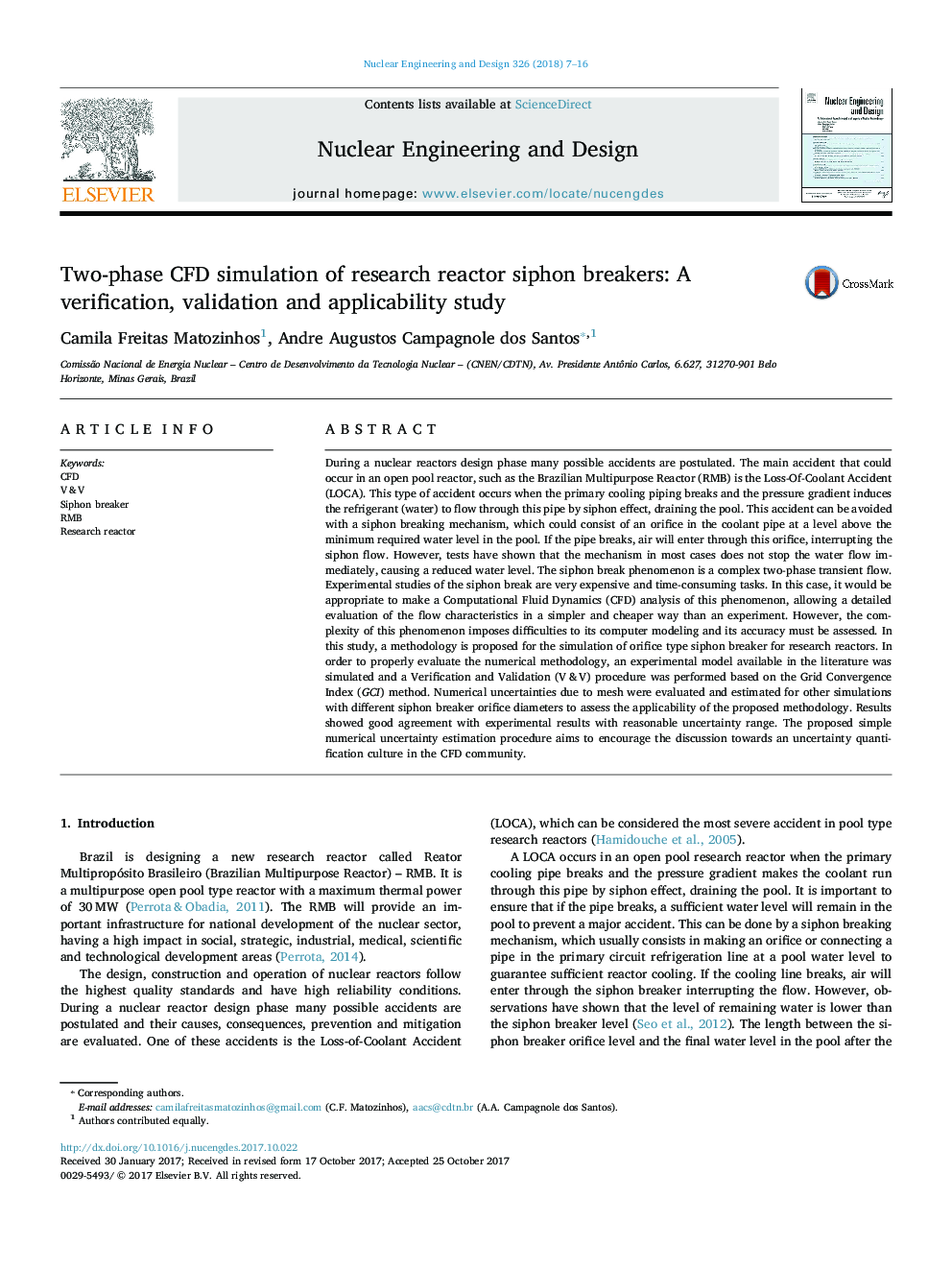| Article ID | Journal | Published Year | Pages | File Type |
|---|---|---|---|---|
| 6759568 | Nuclear Engineering and Design | 2018 | 10 Pages |
Abstract
During a nuclear reactors design phase many possible accidents are postulated. The main accident that could occur in an open pool reactor, such as the Brazilian Multipurpose Reactor (RMB) is the Loss-Of-Coolant Accident (LOCA). This type of accident occurs when the primary cooling piping breaks and the pressure gradient induces the refrigerant (water) to flow through this pipe by siphon effect, draining the pool. This accident can be avoided with a siphon breaking mechanism, which could consist of an orifice in the coolant pipe at a level above the minimum required water level in the pool. If the pipe breaks, air will enter through this orifice, interrupting the siphon flow. However, tests have shown that the mechanism in most cases does not stop the water flow immediately, causing a reduced water level. The siphon break phenomenon is a complex two-phase transient flow. Experimental studies of the siphon break are very expensive and time-consuming tasks. In this case, it would be appropriate to make a Computational Fluid Dynamics (CFD) analysis of this phenomenon, allowing a detailed evaluation of the flow characteristics in a simpler and cheaper way than an experiment. However, the complexity of this phenomenon imposes difficulties to its computer modeling and its accuracy must be assessed. In this study, a methodology is proposed for the simulation of orifice type siphon breaker for research reactors. In order to properly evaluate the numerical methodology, an experimental model available in the literature was simulated and a Verification and Validation (V&V) procedure was performed based on the Grid Convergence Index (GCI) method. Numerical uncertainties due to mesh were evaluated and estimated for other simulations with different siphon breaker orifice diameters to assess the applicability of the proposed methodology. Results showed good agreement with experimental results with reasonable uncertainty range. The proposed simple numerical uncertainty estimation procedure aims to encourage the discussion towards an uncertainty quantification culture in the CFD community.
Related Topics
Physical Sciences and Engineering
Energy
Energy Engineering and Power Technology
Authors
Camila Freitas Matozinhos, Andre Augustos Campagnole dos Santos,
